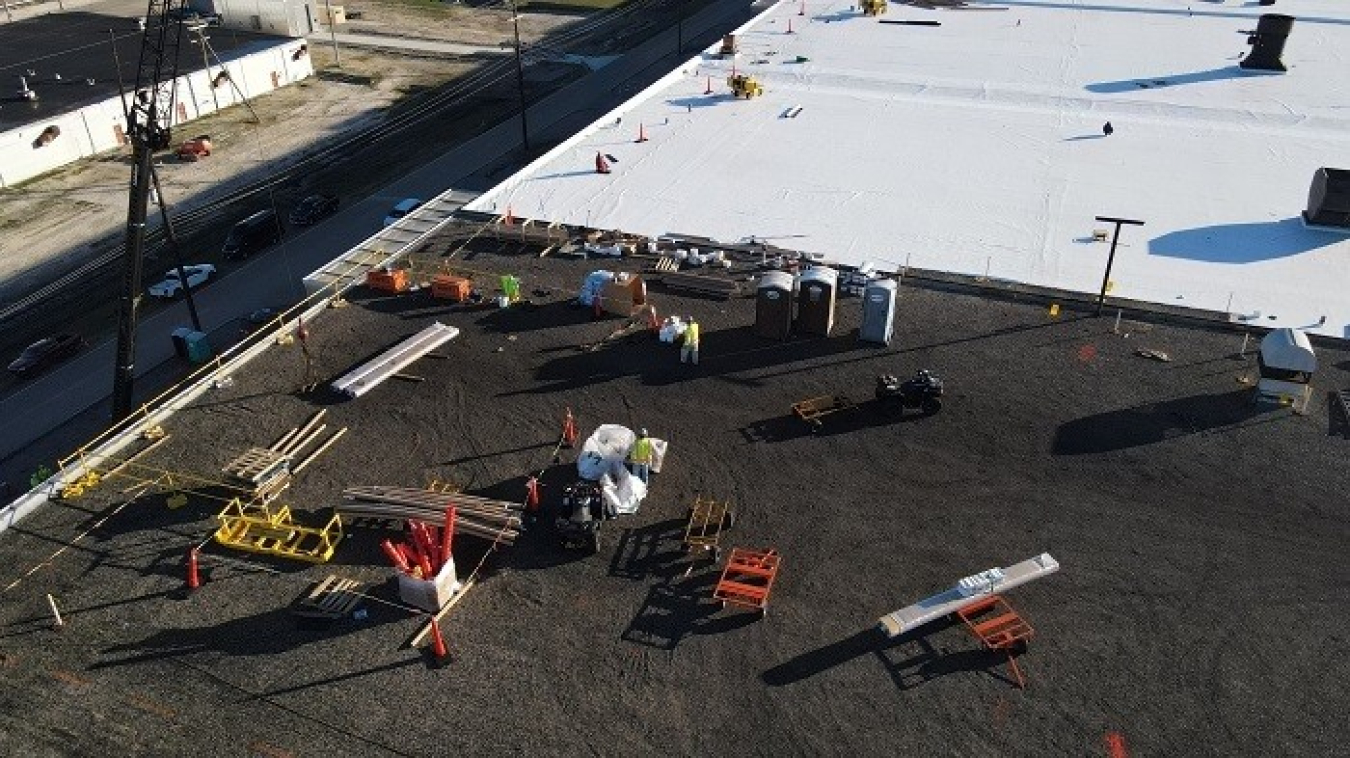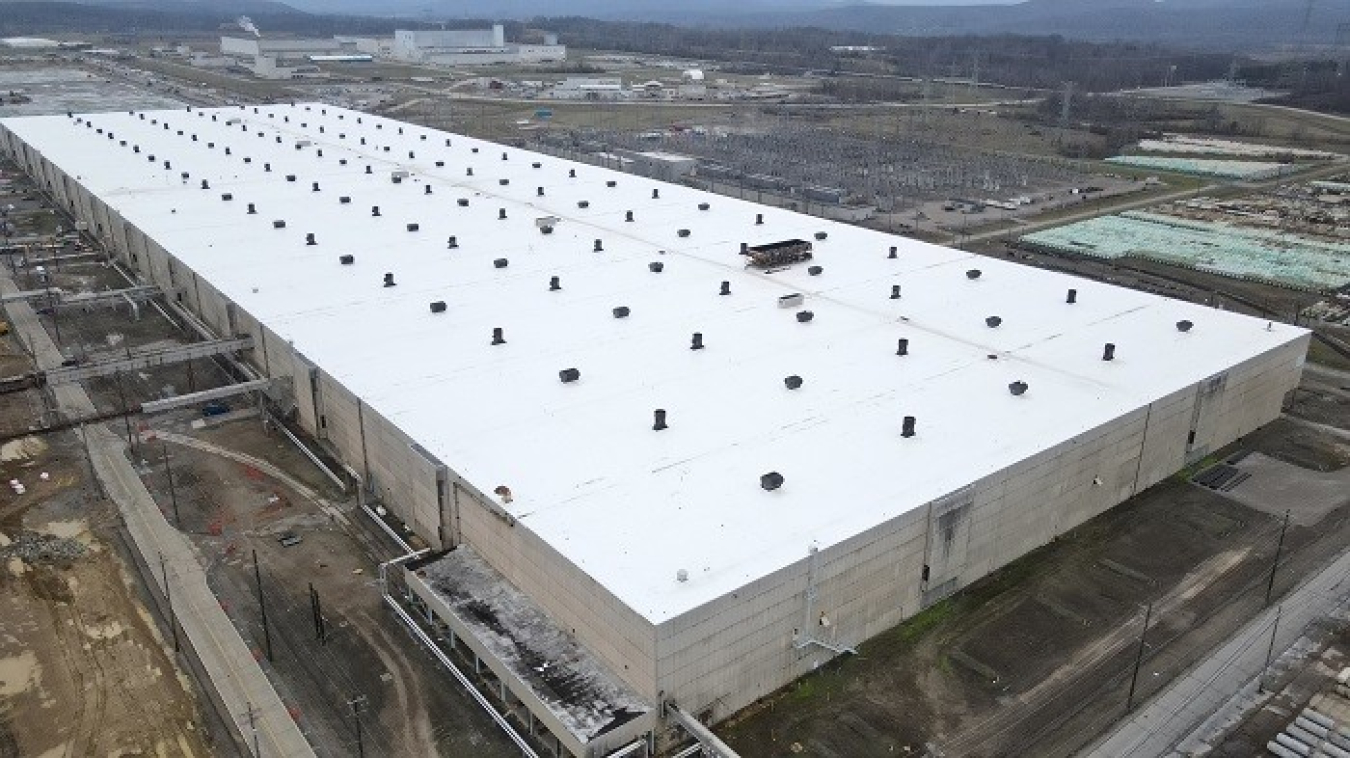X-330, the last of three former uranium enrichment process buildings set for demolition at the Portsmouth Site, received a new roof to prepare the building for deactivation, a necessary step before its teardown.
Portsmouth/Paducah Project Office
March 18, 2025PIKETON, Ohio — X-330, the last of three former uranium enrichment process buildings set for demolition at the Portsmouth Site, received a new roof to prepare the building for deactivation, a necessary step before its teardown.
“Deactivation requires a lot of work inside the building,” Portsmouth Site Lead Jeremy Davis said. “By making sure the workspace is covered and free of standing water and minimizing environmental hazards, the entire process of deactivation is safer.”
U.S. Department of Energy Office of Environmental Management (EM) cleanup progress at the X-330 Process Building and the rest of the former Portsmouth uranium enrichment plant is helping enable new opportunities for the local community to continue advancing U.S. energy and security goals, contributing to the goal of ushering in a new golden era of American energy dominance.
Workers at X-330 used an overlaying method of two thick membrane covers over the existing roof, which did not require any removal before installation. By using this method, areas such as vents were sealed using flashing materials.
“It may seem strange to see crews replacing the roof of a building that is being prepped for demolition, but it is a necessary measure,” said Jason Scarberry, director of deactivation for Fluor-BWXT-Portsmouth, EM's decontamination and decommissioning contractor for the site. “The building's roof was in dire need of repair. Lessons learned from deactivation at other sites like Oak Ridge let us know that this was a necessary task.”
The building is not temperature controlled, so when water enters, it creates a hazard for workers with slippery conditions and freezing in the winter. If water gets into areas that are radiologically contaminated, it can create numerous issues, including the potential spread of contamination, interference with travel paths and safety concerns.
Crews completed repairs to the site’s other two process buildings prior to deactivation activities, as well. They fixed sections of the roof of the X-326 Process Building before deactivating and demolishing the structure, and replaced the entire roof of the X-333 Process Building before finishing deactivation of the 33-acre facility late last year.
Crews finished roof repairs at the X-330 Process Building in three and a half months. Deactivation activities are currently underway and are expected to be completed in about five years.
-Contributor: Shawn Jordan



